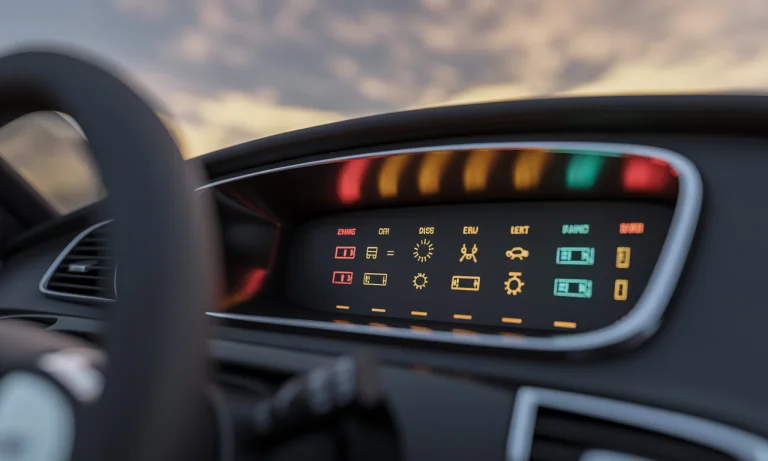When the dashboard suddenly bursts into color, few drivers can decipher its coded warnings with confidence. From the subtle glow of an engine-shaped light to the urgent blink of a battery symbol, these signals can spark anything from mild curiosity to full-blown panic. In 2025, as automotive technology continues to evolve, understanding what these car engine warning lights mean—and how to respond with tools like OBDLink or BlueDriver—has become essential knowledge for any driver hoping to avoid breakdowns or costly repairs. This guide uncovers the stories behind each signal, weaving in firsthand experiences and the latest diagnostic methods so you’ll never feel lost on the road again.
Understanding Engine Warning Lights: The Key Signals All Drivers Should Know
Josh, an IT consultant in Chicago, recalls the first time his dashboard lit up on a winter night. The engine warning light was unfamiliar—and intimidating. For many, this symbol suggests anything from a loose gas cap to a potential engine misfire. What separates a minor annoyance from a major emergency is how the light behaves; a steady glow typically urges a timely service, while a flashing light can spell imminent danger.
Today’s drivers turn to diagnostic scanners like Innova, Autel, and ScanTool to quickly interpret these signals. By connecting such devices, you break through the mystery, revealing specific trouble codes before calling the mechanic. In Josh’s story, an OBDLink revealed the culprit instantly—a misfitted gas cap—thus averting unnecessary worry and expense. Discover more practical insights on responding to warning signs in this resource on engine maintenance signs.
Oil Pressure and Coolant Warnings: Recognizing the Stakes
Nothing halts a journey faster than the sudden appearance of the oil pressure warning light or an overheating alert. Emily and her family found out on a cross-country trip; a red oil can icon blinked just after passing the last service station for miles around. Under the hood, a quick check of oil levels and an Ancel diagnostic scan provided peace of mind—and pinpointed a minor leak before it escalated.
Drivers must recognize the gravity of these signals. A drop in oil pressure or a spike in engine temperature means taking immediate action: pulling over, letting the vehicle cool, and using reliable tools like FIXD or even a basic manual check can prevent engine failure. This life-saving vigilance extends to checking coolant and transmission temperatures, especially in varied climates and under heavy loads. For more tips on vehicle longevity, see the comprehensive car maintenance guide covering routine checks and advanced diagnostics.
| Warning Light | Possible Causes | Recommended Action |
|---|---|---|
| Check Engine | Emissions, Sensor Faults, Misfire | Scan with OBDLink, check cap, service soon |
| Oil Pressure | Low Oil, Pump Failure, Leak | Stop, inspect levels, call mechanic |
| Coolant Temp. | Low Coolant, Radiator, Thermostat | Stop, cool engine, check coolant, inspect system |
Electrical and Safety System Alerts: More than Just a Flicker
Modern dashboards don’t just monitor the engine. Ryan, a rideshare driver in Detroit, relies on his car’s network of alerts—including the battery warning light, ABS system, and even tire pressure indicators. When the battery icon flared up on a rainy commute, a quick scan using Bosch and Actron tools revealed a loose cable. Rectifying it on the spot kept his rating—and schedule—intact.
Brake, ABS, and tire pressure warnings must never be brushed aside. These systems form the foundation of safe driving, especially when responsible for passengers. Routine checks using devices from BlueDriver to Launch detect both electrics and sensor fails before a minor inconvenience grows into a roadside standstill. Gain insight into diagnostic priorities and savings by exploring this feature on efficient car repairs.
Transmission, DPF, and Power Steering Lights: When Technology Talks
Few warnings fluster even veteran drivers like those for transmissions, diesel particulate filters (DPF), or power steering. During winter deliveries, courier Anne noticed her transmission warning light as she merged onto the highway. Years ago, such an alert might have gone undiagnosed. Today, Anne deployed her Innova scan tool, diagnosed low transmission fluid, and completed the route—and deliveries—without drama.
Specialized warnings, particularly in diesel vehicles, rely on modern OBD tools and prompt action. The DPF light, for instance, hints at emission-filter blockages—a challenge for city drivers in stop-and-go traffic. Solutions vary, from regeneration cycles to filter replacement, but recognizing the light—and acting, not ignoring—saves thousands in repairs. Advanced insights on identifying hidden car problems are detailed in this guide to used car issues, perfect for prospective buyers and seasoned owners alike.
| System | Typical Warning | Consequences if Ignored |
|---|---|---|
| Transmission | Overheat/Failure | Loss of drive, possible internal damage |
| DPF (Diesel) | Clogged filter | Reduced performance, costly repairs |
| Power Steering | Assist Failure | Difficulty steering, safety risk |
Day-to-Day Dashboard Alerts: When Routine Saves the Day
Even the most innocuous alerts—like the tight grip of a seatbelt reminder or a persistent fuel cap warning—tell a deeper story. Maria remembers her car’s warning chime after a late-night grocery run. It turned out the fuel cap wasn’t sealed: a minor household slip, but, left unchecked, could have triggered an engine warning and fouled emissions tests. The fix was as simple as a double-check, a reminder of the value in daily habits.
Consistent attention to these signals—light seatbelt icons, brake system cautions, or “Service Soon” reminders—prolongs vehicle life and gives peace of mind. For those seeking to maximize their car’s potential, professional tools and regular reviews recommended in this detailed piece on maintaining peak vehicle performance make all the difference.
Quick-Access Summary: Decoding Warning Lights with Confidence
By embracing technology with diagnostic scanners from OBDLink to FIXD, staying vigilant for every flicker or symbol, and drawing on community knowledge, today’s drivers are equipped to turn roadside mysteries into manageable moments. Whether you’re a first-time owner or a seasoned commuter, mastering your dashboard is the first step toward safer, smarter, and even more economical car ownership. Each light tells a story—are you ready to listen?
Answers to Common Questions About Car Engine Warning Lights
Why does my check engine light turn on for no obvious reason?
A check engine light can be triggered by something as simple as a loose gas cap or as complex as a catalytic converter issue. Using a diagnostic tool like OBDLink or BlueDriver helps identify the cause swiftly.
Is it safe to drive with a flashing engine light?
No—a flashing engine warning light indicates a severe problem, such as an engine misfire, which can cause serious damage. Pull over and seek assistance immediately.
How can I check my tire pressure if the TPMS light appears?
Use a tire pressure gauge to match your tires to the recommended pressure levels found in your car manual. If the light remains, there might be an issue with the TPMS sensor, which can be diagnosed with Ancel or Actron tools.
What should I do if the brake warning light stays on?
Check your brake fluid level first. If normal, have your braking system—pads, lines, and sensors—inspected by a professional as soon as possible.
How can I prevent dashboard warnings from escalating into major repairs?
Regular maintenance, timely attention to all warning lights, and using scanners from trusted brands like Bosch, Launch, or Innova will help you catch issues early, saving money and extending your vehicle’s life.
Did you like it? 4.5/5 (22)






